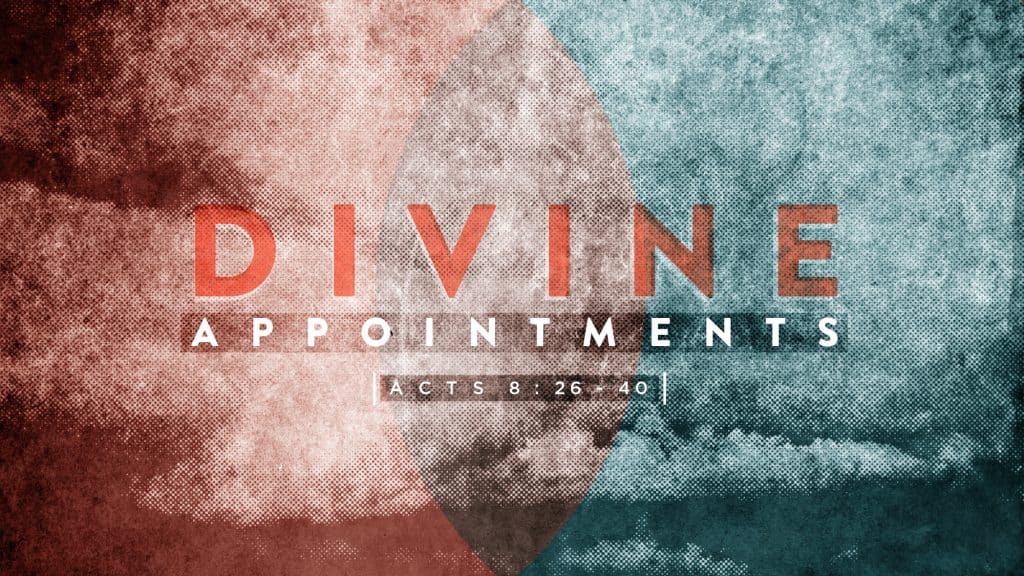 What are the Appointed Times, and Feasts, the Moedim?
What are the Appointed Times, and Feasts, the Moedim?
The Feasts of YHVH – or His appointed times are not just quaint, religious festivals of a bygone Biblical era. They are specific, appointed times (moed’im – Gen 1:14) when we pause to remember, celebrate, and rejoice on those very same special Biblical calendar dates set out and detailed through Moses over 3500 years ago.
 Each feast/mo’ed is a way-point and signpost in our understanding of the character of Yhvh, and
Each feast/mo’ed is a way-point and signpost in our understanding of the character of Yhvh, and
1) WHAT He will do and more importantly
2) WHEN he will do it – a dress rehearsal if you will, for the first and second coming of Yeshua with each feast illustrating a certain essential truth relating to the the everlasting covenant as it unfolds into the history of this earth.
DISCLAIMER:
Many Hebrew Roots, Messianic and Messianic Jewish believers are under theimpression that the modern Rabbinical calendar tabulated by Hillel II is the same as the Biblical calendar. Unfortunately, this is not the case. It is true that the modern Rabbinical calendar is very close, but since the two calendars are calculated using entirely different methods, minor and major variations do exist.
Why is this important? Yahweh has commanded us to follow His feasts according to His calendar, not a calendar that merely approximates it. The modern Rabbinical calendar rarely has feast days at the same time as the Biblical calendar, thereby leading even conscientious followers of Yeshua to observe days that have not been divinely ordained and neglecting days that have been divinely ordained. Please see our short brief here.
The Feasts, the Appointed Times
In order to understand the advents of our Saviour, we MUST understand the feast days, the appointed times (mo’edim) given to us in the Torah which are all prophetic rehearsals and allusions to the First and Second coming of Christ, his Death & Resurrection, the provision of the Torah and the Ruach haKodesh, the Day of Wiping Away & the Resurrection, His Reign on Earth and the Eternal Kingdom as on earth.
There are a total of seven (7) feasts ordained by the Lord through Moses in scripture. The church, as a whole, do not celebrate these days but have mixed and blended them with pagan festivals using pagan names. Many reasons have been given by the church as to why it does not observe these days, (please see here – Colossians 2:16 According to the ancient Greek & Aramaic) but are happy to celebrate contrived mixtures of set-apart dates and pagan holidays, but we’ll save that for another teaching.
Spring Feasts:
1. Passover and First Day of Unleavened Bread (Pesach) – a High Sabbath
2. Last Day of Unleavened Bread – a High Sabbath
3. Pentecost (Shavu’ot) – a High Sabbath
Fall Feasts:
4. Trumpets (Yom Teruah) – a High Sabbath
5. Day of Atonement (Yom Kippur) – a High Sabbath
6. Tabernacles (Sukkot) – a High Sabbath
7. Last Great Day – a High Sabbath
It must be understood that though these are all referred to, in a broad sense, as feast days, only three (1, 3 and 6 above) are truly feast days where we are instructed to actually celebrate with a feast and go on up to Jerusalem, Deuteronomy 16:16-17, Ex 23:17 and Exo 34:23. Yet, they are ALL generally referred to as feast days. These are known as ascension occasions.
Editor’s Note: As we are in diaspora (NOT in The Land of promise), with no current temple, no priesthood, and no Levitical system, this pursuit remains impossible to conduct.
But Whose Feasts are they anyway? Are They Jewish Feasts? And do They Apply Today?
Leviticus 23:2
“Speak to the Israelites and say to them: ‘These are MY appointed feasts, the appointed feasts OF the LORD, which you are to proclaim as sacred assemblies.”
They were given to all twelve tribes of Israel and all those, who were non-Hebrew who left Egypt with the twelve tribes and who stood untited at Mt Sinia. The Scriptures tell us that they are always to be observed. Always. Zechariah tells us that Tabernacles, Suku’ot (6) is even observed throughout the Millennium.
Zechariah 14:16
“Then the survivors from all the nations that have attacked Jerusalem will go up year after year to worship the King, the LORD Almighty, and to celebrate the Feast of Tabernacles.”
Leviticus 23:4 explains how these feast days are to be observed at their appointed times. The Hebrew word for appointed times is “mô‘êd.”
“These are the LORD’s appointed feasts, the sacred assemblies you are to proclaim at their appointed times:”
“Appointed times” – mo’ed. The singular of “Mo’edim” is used in Genesis 1:14.
Genesis 1:14
“And God said, ‘Let there be lights in the expanse of the sky to separate the day from the night, and let them serve as signs to mark seasons וּלְמ֣וֹעֲדִ֔ים and days and years,”
“Seasons” …Mo’edim. Strong’s Hebrew 4150, see here
We have to ask ourselves, “Do we really need the sun, moon and the stars to tell us what season we are in?” Doesn’t Winter, Spring, Summer and Fall speak for themselves? Or do we need the sun, moon and the stars to inform us of when the leaves are falling from the trees? Doesn’t it make more sense that these are to be used in referring to the Lord’s appointed times and feasts as mentioned in Leviticus 23?
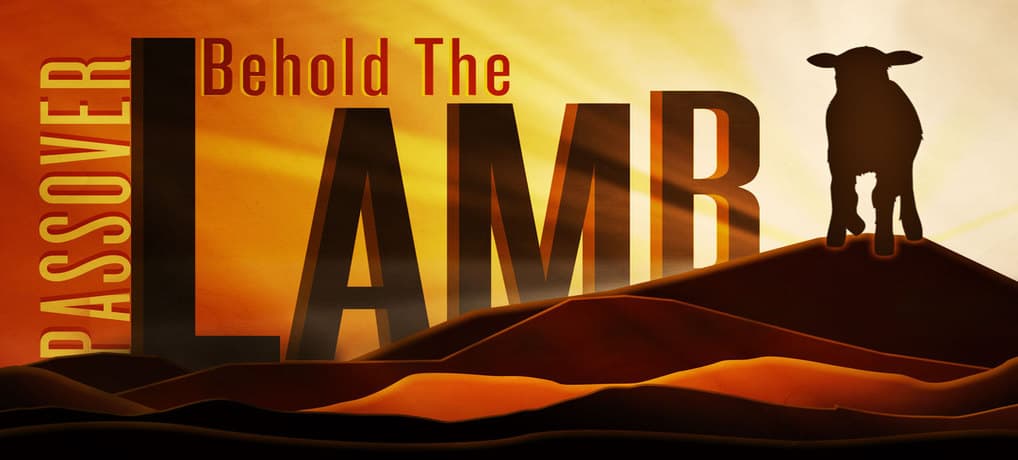
1. Passover (Pesach) and the
First Day of Unleavened Bread.
Lev 23:5 In the fourteenth day of the first month at even is the LORD’S Passover.
בַּחֹ֣דֶשׁ הָרִאשֹׁ֗ון בְּאַרְבָּעָ֥ה עָשָׂ֛ר לַחֹ֖דֶשׁ בֵּ֣ין הָעַרְבָּ֑יִם פֶּ֖סַח לַיהוָֽה׃
Passover memorialises the deliverance from the tenth plague pronounced upon the first-born at midnight and the first day of unleavened bread, on the 14 and 15 day of Aviv / Nisan. Biblical creation day cycles commence at daybreak or dawn according to Genesis 1:5, except for High and Weekly Sabbaths, in which case they begin and end at sunset.

The Passover feast is twinned with the feast of unleavened bread and is memorialised by eating unleavened bread for seven days, from the headmost day of the 14th in the evening to the end of the 21st of Aviv / Nisan.

No products with leaven are allowed in the home, nor are they to be seen in your land during Passover and the seven days of unleavened bread. Ask why?
The simple Passover meal eaten on the night of the 14 Aviv / Nisan draws into sharp focus the account of the bitterness of slavery and our bondage in the land of Egypt to a merciless and stubborn Pharaoh . Only unleavened bread may be eaten. Bitter herbs (onion, endive, radish, lettuce, horseradish) are consumed on account of the bitterness of slavery in the land of Egypt. Also, the story of the Exodus should be retold or read to all present (particularly the children).
Yeshua commanded us to remember His Redemption when drinking the third cup, because the Passover Lamb has in it a lesson illustrating Yeshua’s work. This cup has been corrupted by the Church in their “celebration” of the Last Supper with idolatrous associations, pagan philosophy, guilt producing heart searching, and false means of forgiveness. The keeping of communion or consumption of the Eucharist is a rejection of the Biblical Passover. Scripture commands that no law shall be added to nor subtracted from the Passover (Deut. 12:30), wherefore, inasmuch as the Church makes the communion ritual a religious duty, and it is plain the said “duty” is not according to Torah, it is clear that the faithful must not condone it by participation in it.
2. Last Day of Unleavened Bread
Lev 23:5 And on the fifteenth day of the same month is the feast of unleavened bread unto the LORD: seven days ye must eat unleavened bread.
The first and the last day of this feast is to be considered High-Sabbath days. The beginning of the first day of the feast of Unleavened Bread is when the Passover lamb is eaten. This meal also includes bitter herbs and unleavened bread. In fact, all seven days one is to eat food without leaven as well as remove all leavened products from their house. More on Unleavened Bread . . .
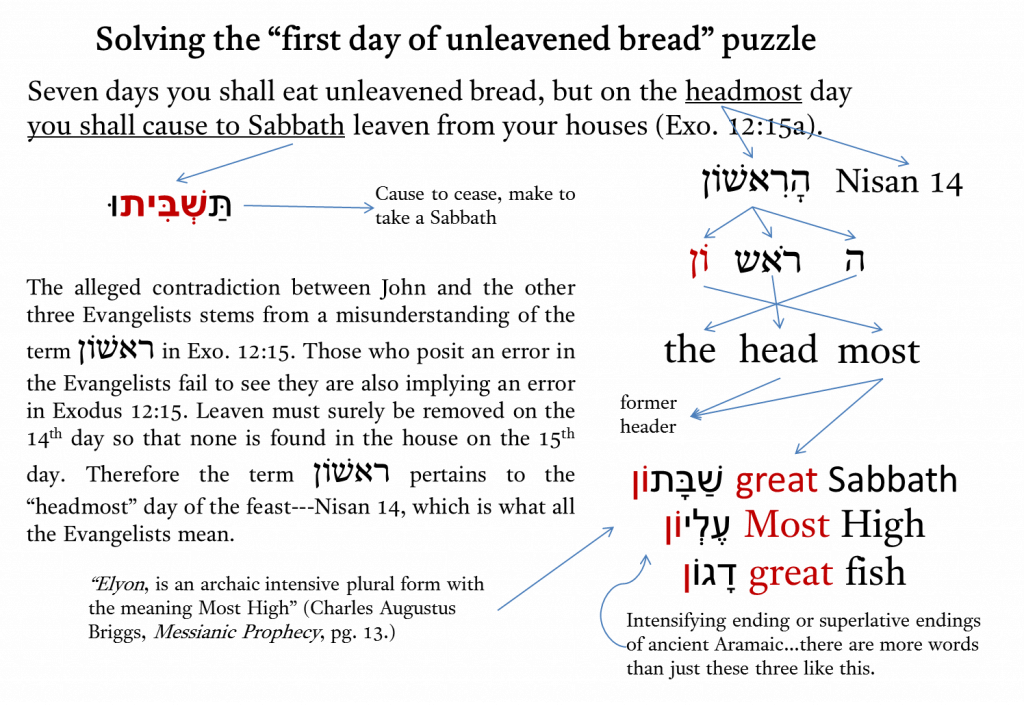
3. Pentecost or Shavu’ot
Lev 23:15 And ye shall count unto you from the morrow after the sabbath
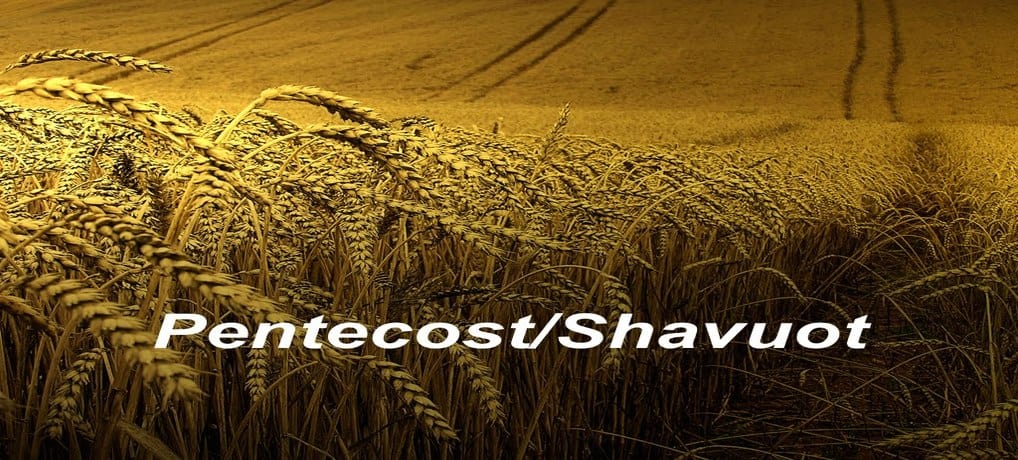 Lev 23:15 And ye shall count unto you from the morrow after the sabbath, from the day that ye brought the sheaf of the wave offering; seven sabbaths shall be complete:
Lev 23:15 And ye shall count unto you from the morrow after the sabbath, from the day that ye brought the sheaf of the wave offering; seven sabbaths shall be complete:
Shavuot is the feast of Weeks or sevens, and is known to Christians by the name “Pentecost” or sadly Easter because 50 days are counted starting on the 16th of Aviv. The 50th day is Shavuot. The seven Sabbaths between Passover and Shavuot are also counted. The first Sabbath after Passover is the Resurrection Anniversary. The reason for counting the Sabbaths is that the Law was given on a Sabbath, 50 days after the Passover. Seven Sabbaths were counted, and then the Law was given on the eighth Sabbath.
Shavuot is therefore the Anniversary of the giving of the Law / Torah, particularly, the Ten Words. Each person is to give a gift according to his means on Shavuot. The substance of this gift may be saved up each one of the Sabbaths leading up to Shavuot.
The work of the Spirit of God in writing the Law on the heart, and in renewing the covenant by circumcising our hearts and the heart of our children is also a valid theme of Shavuot. For the Spirit was poured out in power on this feast day, and the covenant renewed to 3000 souls who repented and trusted the good news. Remember that 3000 fell at Sinai by the sword after the sin of the golden calf. More on Pentecost . . .
4. The Feast of Trumpets, Yom Teruah. 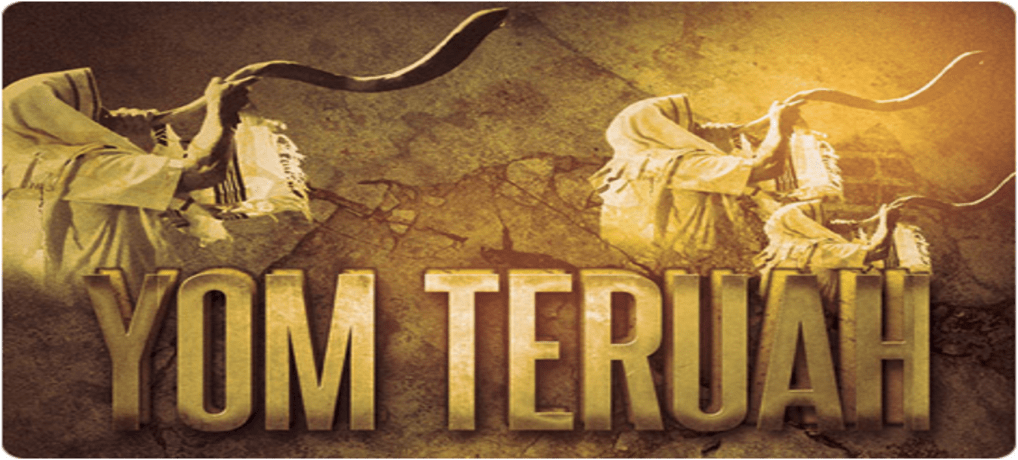
Lev 23:23-25 And the LORD spake unto Moses, saying, 24 Speak unto the children of Israel, saying, In the seventh month, in the first day of the month, shall ye have a sabbath, a memorial of blowing of trumpets, an holy convocation. 25 Ye shall do no servile work therein: but ye shall offer an offering made by fire unto the LORD
This Feast day has been called Rosh Hashana (head of the year), but its proper name is “Trumpets,” because on it the shofar is sounded. A Shofar is a ram’s horn. The only important Trumpet not sounded is that for the Day of Atonement beginning in the year of Jubilee. That trumpet is called the “Great Trumpet.” Shofarim is a feast for recalling God’s Prophetic Utterances, and the things to come. It is also a time for remembering Yeshua’s Birth. For He was born on Shofarim. Therefore, the holy convocation should be in keeping with these themes.
A trumpet announces an important event. Therefore, we can dwell on Yeshua’s first coming (His birth) and his Second Coming, which will also be announced by trumpets.
It is a one day celebration that always falls on the first day of the seventh month (Tishrei/Ethanim). This is the only holy day that falls on the first day of a month; a new moon. It is to be considered a Sabbath day and is commemorated with trumpet blasts. More on Day of Trumpets, Yom Kippur . . .
5. The Day of Atonement, Yom Kippur.
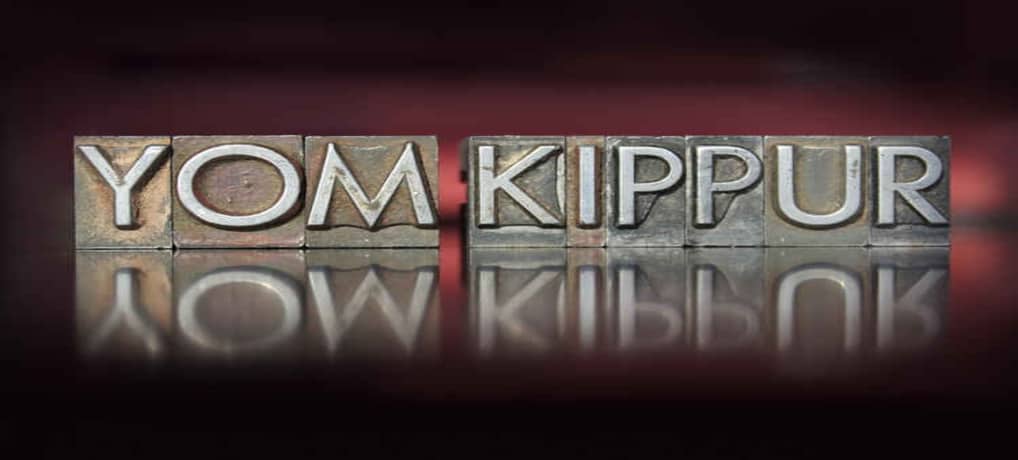 Lev 23:26 And the LORD spake unto Moses, saying, 27 Also on the tenth day of this seventh month there shall be a day of atonement: it shall be an holy convocation unto you; and ye shall afflict your souls, and offer an offering made by fire unto the LORD.
Lev 23:26 And the LORD spake unto Moses, saying, 27 Also on the tenth day of this seventh month there shall be a day of atonement: it shall be an holy convocation unto you; and ye shall afflict your souls, and offer an offering made by fire unto the LORD.
The ten days from Shofarim to Yom Kippur are the “Days of Awe,” which is the traditional time of repentance and preparing the heart for Yom Kippur. The Church’s corruption of this feast is called “Lent.”. Yom Kippur itself is a fast day, a day to be somber, a day to pray and search the heart, a day to afflict one’s soul. It is a day to ask yourself what we need to make right with God and man. More on Day of Atonement, Yom Kippur
6. The Feast of Tabernacles, Sukkot and
7. The Last Great Day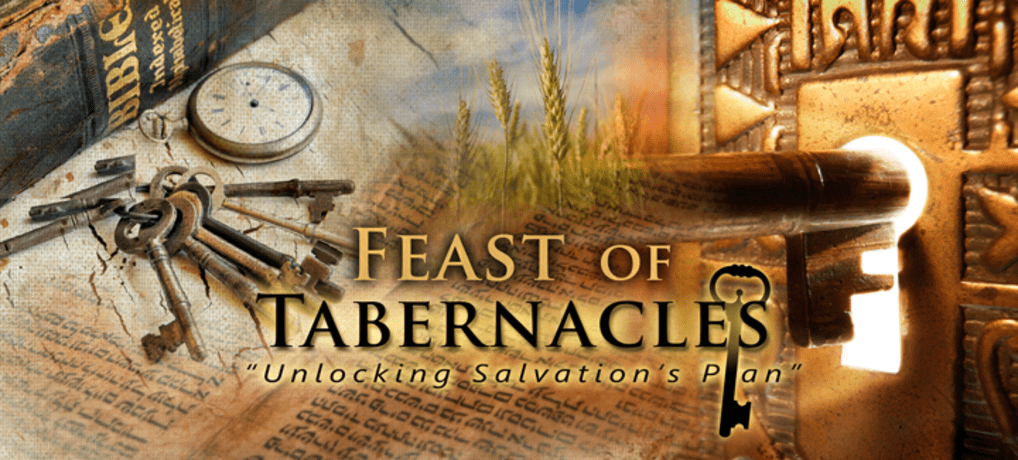
Lev 33: 34-36 And the LORD spake unto Moses, saying, 34 Speak unto the children of Israel, saying, The fifteenth day of this seventh month shall be the feast of tabernacles for seven days unto the LORD. 35 On the first day shall be an holy convocation: ye shall do no servile work therein. 36 Seven days ye shall offer an offering made by fire unto the LORD: on the eighth day shall be an holy convocation unto you; and ye shall offer an offering made by fire unto the LORD: it is a solemn assembly; and ye shall do no servile work therein.
This begins on the fifteenth day of the seventh month and lasts seven days. The first day is to be considered a Sabbath day. The eighth day, after the seven, is to be for a closing assembly and to be considered a Sabbath day as well. During the seven days the people are to rejoice and celebrate while living in booths to remember that the Israelites lived in booths after they were freed from Egypt.
The eighth day is representative of the new beginnings in eternity AFTER the millennium. The millennium represents the seventh day Sabbath… The Day of the Lord.
It must be noted that these are not “Jewish” feasts. These are God’s feasts and appointed times. We must understand that it is God’s calendar that dictates, not ours. His calendar is the only one that truly counts. It should be noted that there are several differences of opinions in how to determine the exact days of the calendar of Leviticus 23. We encourage everyone to do their own due diligence in studying out the Father’s calendar according to the Scriptures.
In reference to the wearing of a beard and the wearing of fringes under the Levitical Priesthood, is the relevant for us to do even though we are now under the Priesthood of Christ? Do we wear beards and fringes or not?
Hi Ken
Apologies for any delay. Thanks for your question which I have pondered now for awhile, I trust this below helps and sheds some light on the subject:
In the most ancient era of Hebrew culture, Tzitzit more or less literally meant, “lock of hair”; indeed, a Tzitzit resembles a lock of hair. And, in modern terms, it looks much like what we would call a tassel. But, of course, in ancient times, tassels BEGAN as but decorative locks of hair. As with so many of these sorts of things we find in the Torah, the concept of Tzitzit was not an entirely new invention, as much as it was an evolution and transformation of something that already existed. Ancient etchings and pictographs from various regions in Asia show that the wearing of tassels on garments was fairly widespread. Though, as far as anyone knows, the Hebrew PURPOSE for the tassels, the Tzitzit, was unique.
And, that stated purpose for Tzitzit is laid out in Numbers 15 verse 39: that when the Israelites looked at them, it would remind them of God’s commandments. And, so we see how this instruction is connected to the story of the man who gathered the firewood. The Tzitzit were intended to be a constantly worn reminder that God’s Laws were to be obeyed, so that the Israelites would not commit sins against the Lord and thus be subjected to the curse of the law.
The vast majority of the details concerning exactly how a Tzitzit is to be made and worn are Tradition. We get the primary Biblical instructions right here in Numbers 15, and there is precious little said about the subject. However, if we are to understand, today, the significance of the Tzitzit, we must begin by understanding what the writers of the Old Testament understood: that what was worn as, or on, the hem of one’s garment was an indication of one’s status in the community. Even more…..now please pay close attention to this……the hem of one’s garment was seen as an extension of one’s own personality and authority. The hem was the common status symbol of the Biblical era, throughout the Middle East, and even in somewhat earlier times.
Now, you might scoff and say, the hem of a garment as a status symbol…….as an extension of one’s personality? Sure, we do the very same thing only in different ways in each culture of the world. In America in general, we believe the car we drive or the brand of the clothing we choose says something about whom we are inside. Christians often plaster their cars with bumper stickers and various religious insignias as another means of explaining something about our beliefs. Or we wear Crosses, or Stars of David, or that 3-part Symbol, or other items that are but visible extensions of our personalities and persona. And don’t even think some people aren’t superstitious about these emblems with St. Christopher’s medals, WWJD bracelets, and so on. The hem of the garment played a similar role in more ancient times.
Ancient Akkadian documents indicate that a husband who cuts the hem off of his wife’s garment thereby divorces her. A sorcerer might recite an incantation over a cut-off piece of hem from a demon-possessed person, so much was the hem thought to be a literal extension of that person.
And of course we find several mentions of hems of garments being involved in some of the more famous Biblical stories (though really we Christians have had some rather odd notions of what was being indicated such that had a person of the Biblical era listened in on our views about it, they would have rolled in laughter).
We’ll get to one of those stories in particular in a moment; first, though, we must understand that hems of garments held actual legal force thousands of years ago. They were more than mere status symbols; they were legitimate I.D. in many cases. Thus kings and very high leaders might wear a very intricate hem that often included the use of the color purple. Purple was, and remains, a symbol of royalty in most Middle and Far Eastern cultures, and the practice of using purple as a royal color became practically world-wide in time.
In fact, written records found in Mesopotamia indicate that a seer or a wise-man in service to the King was required not only to TELL the King his vision or prophetic dream, but that he had to write it down. Once written the document was presented to the King along with a lock of hair from that seer’s own head, along with a piece of the hem of his garment. This was the equivalent of a sworn and notarized affidavit and indicated the truthfulness of what was recorded.
So in the Tzitzit we see the blending between two ancient symbolic elements: the “lock of hair” with “the hem of the garment”. But we also need to recognize that it was primarily royalty and aristocrats who HAD elaborate garment hems……. not the common folk. The average common person had no need to display his status nor could he afford to. So we must add to the equation that in the ancient world the concept of hems as a means of status (that at God’s direction evolved into Tzitzit) is also generally considered to be an indication of royalty and legal authority.
Now, let’s apply this to the Hebrew Tzitzit.
Basically, the Tzitzit is but an extension of the hem. Notice that the Tzitzit is commanded to be worn on the corners of the garment. This usually taken to mean an outer garment, something that is visible. However not all Hebrew sects accept that and many wear them underneath their outer garments.
The Hebrew word usually translated as corners (as in corners of the garment) is kanaf. And kanaf more correctly means “extremity” or “wing” not corners. The idea is that the hem is the extremity of any garment. So it’s not that Tzitzit directly represents the hem of the garment, rather Tzitzit are to be ATTACHED to the hem of the garment. Although, exactly how this was manifested varied over the centuries.
There is an OT story about David and Saul that demonstrates the meaning of garment hems in the ancient world at least in the early era of the Kings of Israel. The mentally unstable King of Israel, Saul, has determined that he must kill David and David has fled with a band of about 600 men from the northern part of Israel, down to the southern desert reaches of Israel. That area today is called Ein Gedi, very near the Dead Sea.
NAS Matthew 9:20 And behold, a woman who had been suffering from a hemorrhage for twelve years, came up behind Him and touched the fringe of His cloak; 21 for she was saying to herself, “If I only touch His garment, I shall get well.”
NAS Matthew 14:34 And when they had crossed over, they came to land at Gennesaret. 35 And when the men of that place recognized Him, they sent into all that surrounding district and brought to Him all who were sick; 36 and they began to entreat Him that they might just touch the fringe of His cloak; and as many as touched it were cured.
Now we can reasonably debate over whether the fringe of Yeshua’s garment (Tzitzit) was on a prayer shawl or attached to a middle garment or located at the bottom of the skirt/robe that was the typical dress of folks in that era. But what is not arguable is that this “fringe” was Tzitzit. There is absolutely no record of any other kind of “fringe” that Hebrews wore at the hem (except for Hellenist Jews of the elite classes who had adopted Roman ways).
Let me also point out something else: that this practice was NOT limited to men. Women did, and do, observe the wearing of Tzitzit…although, as one would expect the practice varies from one Jewish sect to another. In general the wearing of Tzitzit by women was, and remains, a personal choice. It was so in Jesus’ day as well and this is well attested to in documents from that era.
Now how might this affect gentile Christians? Well as with so many things that we encounter in Torah that have evolved in practice according to a mixture of Scripture and Tradition, just how Christians are to deal with this command is not entirely clear. While ordinary Israelites could not wear clothing of mixed fabrics, the Priests…according to all known documents…could and did.
Personally I do wear them – occasionally and circumspectly, maybe this all comes down to personal choice, many Jews don’t many do. Yeshua wore them for sure, under the culture and Torah precepts.
The same applies to your question in regard to facial hair . . . the question then may arise regarding Tefillin . . . we have to be aware of commandments and tradition that always grows up around most belief systems.
A simple knowledge of Hebrew tells us that some Jews are taking things too literally when they put on Tefillin (Phylacteries). But since it isn’t true unless a Jewish scholar says it, I located this tidbit from Rashbam cited by N. Gordon.
“‘For a sign upon your hand’ According to its plain meaning (Omek Peshuto), ‘It shall be remembered always as if it had been written upon your hand’ SIMILAR TO ‘he put me as a seal upon your heart’ (Cant 8,6). ‘Between your eyes’, like a piece of jewellery or gold chain which people put on the forehead for decoration” (Rashbam on Ex 13,9).
I hope that helps . .
Bobby